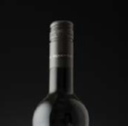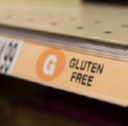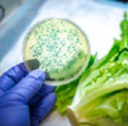26 January 2022
Does that contamination warrant a recall: Just what is the threat?
by Thomas Pasley
When food products pose a threat to public health, a rapid response is required to closely manage the ensuing recall and liability claims. But sometimes, the most complex question is: how real is that threat? Thomas Pasley, Technical Director at Integra Technical Services offers some observations and examples.
A major challenge of product recalls is failure to take the problem seriously or eliminate the risk of ongoing recalls by responding insufficiently or too slowly. Given the ever-growing list of seemingly banal events that can generate a recall, it is easy to be caught napping. Gauging the appropriate response is the immediate conundrum. We also have to consider whether a recall constitutes an insured event under the terms of most recall insurance policies.
When it comes to a trigger, most recall policies require the cause (such as contamination, foreign material or mis-labelling) to result in bodily injury or property damage within a specific period, usually 12 months. These definitions may seem straightforward. Surely, we can all recognise injury, illness and property damage. But, as real-life case studies show, such assumptions can often prove to be naive.
As safety standards and the detection of unwanted materials such as glass, bacteria, mould and allergens improve, the awareness of all parties in the supply chain, and those administering consumer protection rules, is becoming heightened.
When pieces of glass or metal enter products, there is an obvious, albeit small, risk of ingestion injury or product damage. These hazards are easy to understand because we can see the contaminants. But often, the causes of recalls are micro-organisms and constituent parts measured in just a few parts per million (ppm) which are invisible to the human eye.
What constitutes an event?

Wine bottle screw cap seals
The pvdc inner seals inside the screw caps of wine bottles act as a seal and may stick to the top of the bottle and ‘pop off’ when opening. A wine producer is concerned that the seal could cause an eye injury or be accidentally swallowed. After an increase in these incidents in a particular vintage, the distributor is no longer prepared to sell the wine in the US, intends to withdraw it from sale and claim under their recall cover.
Could the risk identified possibly come within the particular wording – an “impairment” that might cause injury within 12 months? The insurer takes a more cautious approach and meets the claim up to the policy limit.

Gluten-free foods
Whilst many people choose a reduced-gluten diet, a small sub-set is allergic to gluten at varying levels, or has Coeliac disease. The effects of gluten vary for individuals. The definition of ‘gluten-free’ also differs between jurisdictions. The FDA suggests that levels of gluten below 20 ppm constitute ‘gluten-free’, whereas in New Zealand and Australia, the limit is stricter at 3ppm. The measure, if regulated at all, differs across the world.
When an Australian manufacturer’s tests find that its gluten-free products contain 7ppm of gluten, this clearly breaches national rules. The product is effectively mis-labelled and cannot be sold. Would 7ppm, which the FDA considers gluten-free and harmless, cause injury or illness in the next 365 days?

Bacteria levels
Facial cream is made from a ‘milk’ base. After six months of testing, with cream applied via fingers or a swab, bacteria levels elevate slightly to 200ppm. Higher bacteria levels put the cream outside specification, so it is recalled on the premise that if a user had an open face wound, the bacteria could cause an infection. This is correct in one respect, yet the natural level of bacteria present on the face, let alone hands, of an average person would be many times higher.

Pathogens
Pathogens are illness-inducing bacteria. Listeria (L) is an organism with a very bad wrap, especially for pregnant women, and Monocytogenes is one of the worst strains. L Innocua is another gram-positive strain with rod-shaped bacteria. The name ‘Innocua’ suggests it is innocuous and not a pathogen. Listeria is an assumed pathogen that clearly triggers the definition of accidental contamination, but what if only Listeria Innocua is present? The devil is very much in the detail.
Whilst claims such as these are accepted by the market, each event will turn on its merits. The market may not continue to take the same view, or opt to widen wordings to remove the necessity for a risk of physical injury or damage. Such a change would provide much broader cover than exists as standard currently.
Insights and guidance from experienced adjusters
So, what does this tell us beyond the need to engage quickly and meaningfully with your client to fully understand their position, risks and exposures, and assist with potentially difficult decisions? You can’t make decisions for an insured, but adjusters with experience of recall claims can offer invaluable insight and assistance.
Experienced crisis-management adjusters bridge the gap between statutory requirements, commercial drivers and insurance cover, and help to appraise the crisis faced, exposures at hand and how the policy may or may not respond. All insurance policies require the insured to act as if uninsured. By guiding them through the potential outcomes of the loss they face, adjusters can help to set the right expectations at the right time, and minimise any potential polarisation in the event the recall policy does not respond to the loss. Just how to do that is a whole new topic.